North Country Honor Flight #64 Military Biographies
Flight 64 flew on September 6, 2025
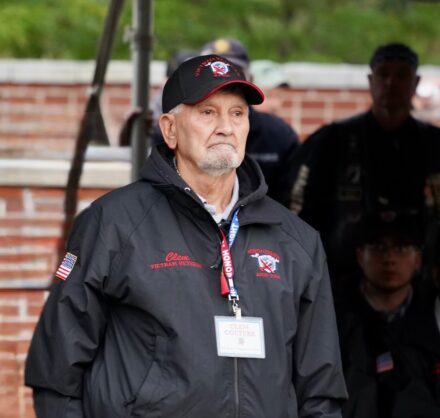 Clement Couture, US Army Reserve 1962-1966 and 1974-1980 Vietnam
Clement Couture, US Army Reserve 1962-1966 and 1974-1980 Vietnam
After basic training, Clem was assigned to the Headquarters Company as a Mechanics Assistant in the motor pool. His job included transporting troops and supplies for training. Before long, he was promoted to dispatcher, sending others into the field.
One vivid memory from October 1962 during the Cuban Missile Crisis is when the base went on full alert. This was no longer practice—it was real. Everyone was issued full gear and braced for the worst. Thankfully, President Kennedy resolved the crisis peacefully.
When Clem decided to re-up, he began teaching medical training on how to handle injured personnel as a First responder.
He also remembers one lesson learned the hard way. After going to church during KP duty, he took his time returning. The officer, wise to this trick, handed him a toothbrush and had him scrub every door threshold in the dining hall. Clem never pulled that stunt again.
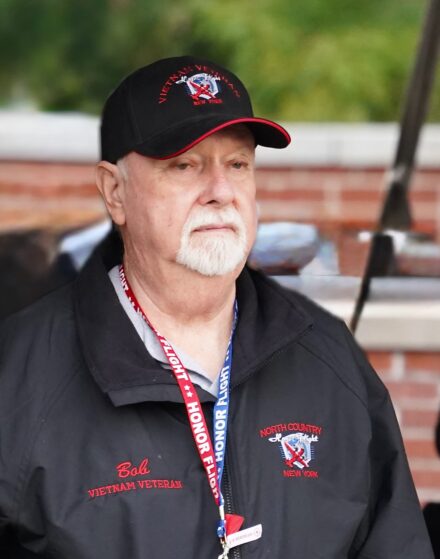 Robert Dwyer, US Navy 1967-1970 Vietnam
Robert Dwyer, US Navy 1967-1970 Vietnam
After high school, Bob Dwyer moved to the North Country to attend SUNY Plattsburgh, where he met his future wife, JoAnn. He graduated in 1966 and, inspired by his father—a World War II Navy veteran—enlisted in the U.S. Navy during the Vietnam War.
In 1968, he was accepted into US Naval Officer training where he trained in navigation, weapons, propulsions, and naval warfare.
As a lieutenant, Bob led a detachment supporting Navy combat and search-and-rescue operations in the coastal and inland waters of North Vietnam. He also took part in missions across Southeast Asia, including the Philippines.
JoAnn and their newborn daughter, Colleen, eventually joined him overseas. During one harrowing trip through the mountains of northern Luzon, they were forced to huddle on the floor of their car to avoid gunfire from bandits chasing them.
After his honorable discharge in 1970, Bob returned to Plattsburgh and began a nearly 30-year career with U.S. Customs in Champlain, New York.
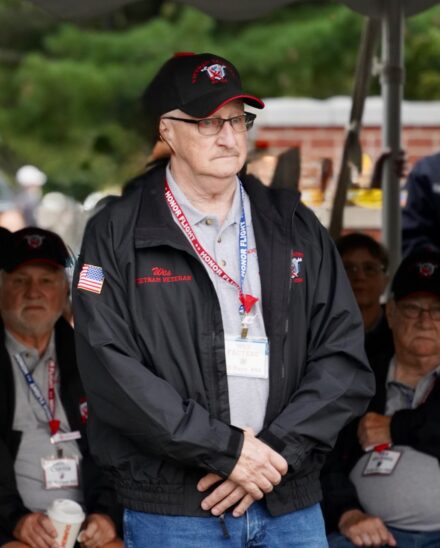 Wesley Facteau, US Navy 1970-1973 Vietnam
Wesley Facteau, US Navy 1970-1973 Vietnam
Wes enlisted in the Navy and trained as a Storekeeper at Great Lakes. His first assignment was the aircraft carrier Shangri-La, where he managed supplies for a 10½-month cruise in the Western Pacific. Getting there was a journey—Albany to California, Hawaii, Wake Island, Subic Bay in the Philippines, Vietnam, and finally to the ship by cargo plane.
He spent time in Japan during repairs, helped decommission the Shangri-La in Boston, then served on the destroyer Bronson out of Newport, Rhode Island, headed for the Mediterranean.
Asked for a memory, Wes laughed—he was told never to eat monkey meat on a stick in the Philippines. So naturally, he did. “Not great,” he said, “but it went down.”
Wes says his Navy time was awesome visiting all the places he did and seeing different cultures and people. Young people should think about joining up.
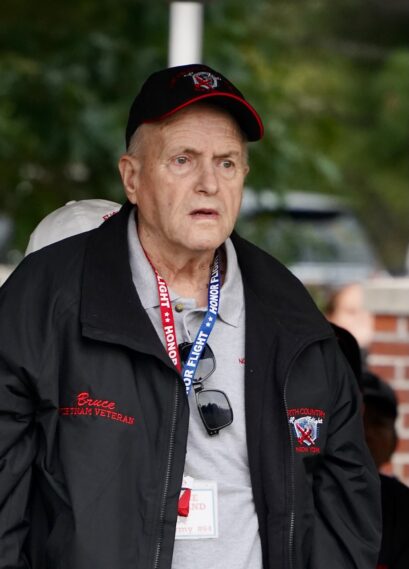 Bruce Garland, US Army 1965-1967 Vietnam
Bruce Garland, US Army 1965-1967 Vietnam
Bruce was drafted into the military at the same time as his brother—three of the four brothers served, with the fourth joining the National Guard. After basic training at Fort Dix, he went to Aberdeen Proving Ground for Advanced Individual Training. There, they discovered he was colorblind, so he was assigned to the motor pool, trained as a repairman and truck driver.
While in Vietnam, Bruce filled countless sandbags and transported troops. On one trip, a soldier accidentally discharged his rifle in the back of the truck—nearly taking Bruce’s rear end off. Thankfully, there were no windshields, or he might’ve gone right through one. Another close call came on a mountaintop, when the wrong grid coordinates were called in. Bruce and his unit heard the incoming shell, held their breath, and were relieved when it landed harmlessly in a nearby rice paddy.
Through it all, Bruce was proud to serve his country and did exactly what was asked of him.
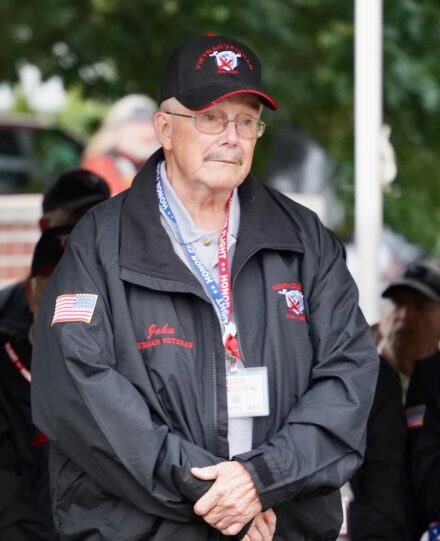 John Glasgow, US Navy 1967-1971 Vietnam
John Glasgow, US Navy 1967-1971 Vietnam
John joined the U.S. Navy Seabees, inspired in part by his brother’s service. Unlike traditional sailors, Seabees flew to assignments. John was in construction—building with concrete and steel.
During his second tour in 1969, as his unit was leaving base, Hurricane Camille hit. They took shelter in storage buildings, which collapsed around them. John spent three grueling days clearing debris and searching for bodies, with no food or showers. A lieutenant in his unit tragically lost his entire family.
Later, in Da Nang, Vietnam, while constructing ammunition sheds, John fell off a roof onto a pile of rocks. In the hospital, he couldn’t stand at first—but two days later, driven by sheer will, he rejoined his unit and continued the mission.
John considers himself lucky to have made it home and hopes to one day return and see how the places have changed.
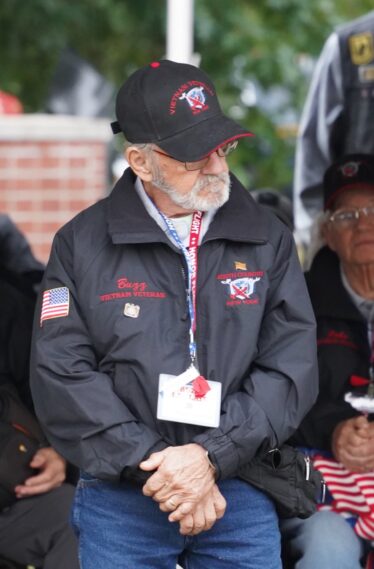 Darrel LaClair, US Marine Corps 1967-1969 Vietnam
Darrel LaClair, US Marine Corps 1967-1969 Vietnam
In 1967, Darrel enlisted in the U.S. Marine Corps for a two-year tour. He trained at Parris Island, Camp Lejeune, and Camp Pendleton before deploying to Vietnam. In Phu Bai, he was assigned to FOX Company, 2nd Battalion, 5th Marines, 1st Marine Division.
Darrel fought in multiple operations, including the brutal Battle of Hue City during the Tet Offensive. Darrel was wounded three times—twice by shrapnel, once by gunfire—and was awarded three Purple Hearts, among other honors.
In 1974, Darrel received the Conspicuous Service Cross from New York State, presented by Senator Ronald Stafford.
But for Darrel, medals don’t tell the story. The real weight of war is in the friends he made—and the three he lost. Those bonds run deep, and the pain runs deeper. As Darrel says quietly, “I have no stories to tell. Some memories hurt too much to speak.”
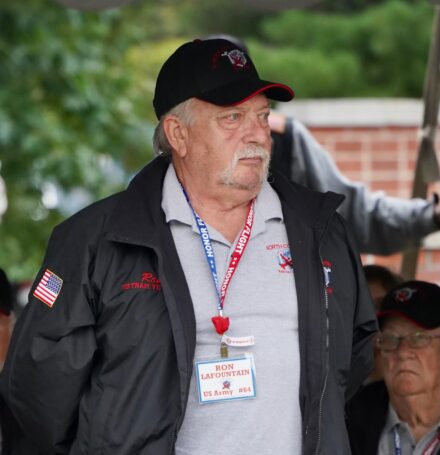 Ronald LaFountain, US Army 1974-1977 Vietnam
Ronald LaFountain, US Army 1974-1977 Vietnam
Ron enlisted in the Army at 17 after his hesitant father signed off. After basic training, he went to Fort Gordon, Georgia, for Military Police training, then to Fort Knox—first for corrections, then cross-trained as a road patrolman, similar to state police, where he remained for his entire enlistment.
At Fort Dix, he recalls a 3 a.m. scare when his drill instructor ordered everyone to pack for Vietnam. They stood in the rain, bags in hand—only to be told it was a false alarm. Three men went AWOL that night.
At Fort Knox, during a Gold Vault alert, tanks tore across a golf course to respond. The colonel refused to use the phone to cancel the alert—so Ron did it for him.
Ron worked in the Provost Marshal’s Office and was part of the military police squad that conducted criminal investigations while also developing programs to prevent and reduce crime.
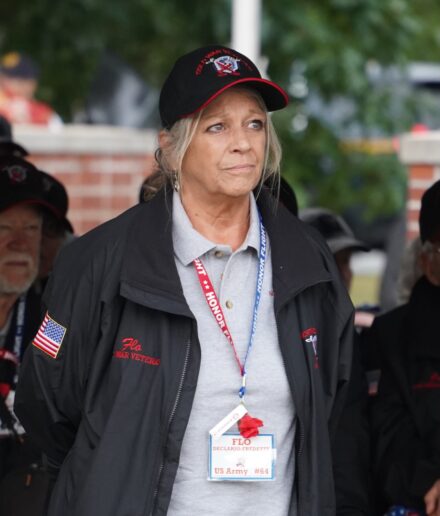 Florence DeClario-Fredette – Veteran Guardian, US Army 1982 Cold War
Florence DeClario-Fredette – Veteran Guardian, US Army 1982 Cold War
The path that led Flo to the Army recruiter isn’t as important as what she gained from the experience—discipline, honor, strength, and courage. At Fort Dix, basic training pushed her beyond her limits, and she rose to the challenge, ready to serve her country. But an injury brought her training to an early end. Though she was honorably discharged, the soldier in her remained.
While awaiting discharge, Flo was assigned as a company truck driver, transporting troops to the arsenal, the range, the mess hall, and the barracks. The gratitude she received from fellow soldiers—and the time behind the wheel—sparked a lifelong love for trucks.
She returned home a changed and disciplined woman, carrying the values of military life into civilian life. Today, being of service to others remains her greatest honor.
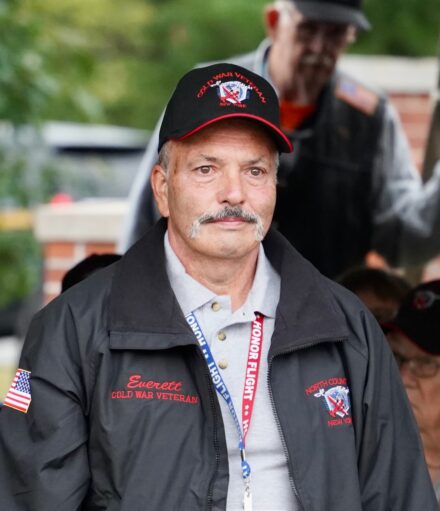 Everett Plumadore, US Navy 1976-1981 Cold War
Everett Plumadore, US Navy 1976-1981 Cold War
After his brother Howie called a Navy recruiter, Everett got a call from the Seabees—they gave him three days to decide. He went home, then to the bar. After a six-pack, he said yes.
Everett enlisted under the delayed entry program and went to Great Lakes, where he trained and worked briefly as a dental technician. In Gulfport, Mississippi, he trained as a mechanic and joined the Amphibious Construction Battalion—doing mechanic work, loading ships, and practicing beach landings, where the average life expectancy in combat is just three seconds.
While stationed at Guantanamo Bay, Cuba, working in Public Works, Everett met Joanne. They’ll celebrate 44 years of marriage this year.
Everett says everything about his service was special—and he enjoyed it all. His last battalion still holds reunions every two years.
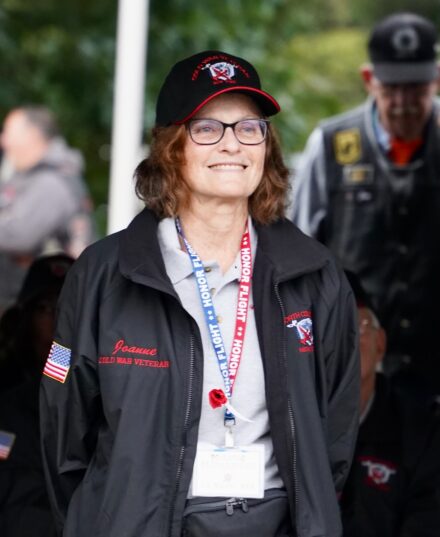 Joanne Plumadore – Veteran Guardian, US Navy 1978-1984 Cold War
Joanne Plumadore – Veteran Guardian, US Navy 1978-1984 Cold War
Joanne enlisted in California and began basic training in Orlando, Florida, followed by broadcast journalism training at Fort Benjamin Harrison. Her first assignment was at Guantanamo Bay, Cuba, where she prepared news from the teletype for broadcast—each word chosen carefully, knowing other countries were listening.
She then served in Sigonella, Italy, and later the Azores. Before that move, she married Everett, who eventually joined her overseas.
Joanne’s service brought unique experiences. While filming a documentary, she jumped from a helicopter with a full-sized camera on her shoulder—a risky move she loved, though she never saw the final cut. Another time, while scuba diving, she accidentally swam from the enlisted beach into the officers’ area and was quickly redirected.
Her time in the military combined skill, adventure, and a touch of humor—hallmarks of a remarkable career.
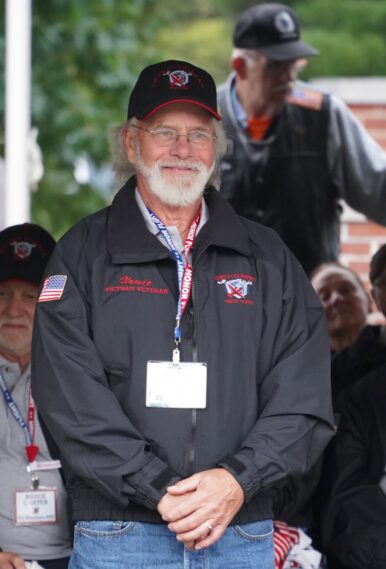 Howard Plumadore, US Navy 1974-1978 Vietnam
Howard Plumadore, US Navy 1974-1978 Vietnam
Howie’s dad couldn’t afford college, so he told him to join the service. By sixth grade, Howie already knew that’s what he was going to do. His guidance counselor, Mr. Toy, asked him what he wanted to be—and Howie said, without hesitation, “military.”
In boot camp, he landed a cushy job as the battalion’s Master at Arms. He wore a white belt and got perks like being first in the chow line.
Assigned to the USS Ranger, CV-61, Howie operated two massive, 1,200-pound superheated boilers and managed the catapults that launched aircraft. One proud moment: he was honored on the bridge and given the rare chance to steer the ship—he piloted it for exactly 5.3 nautical miles.
Fittingly, the USS Ranger was commissioned on August 2, 1954. Howie was born the very next day, August 3. It was like fate—they belonged to each other. He served four years aboard her, and when the time comes, his gravestone will say just that.
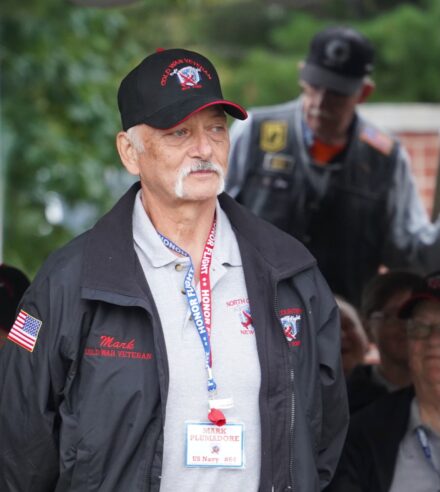 Mark Plumadore, US Navy 1979-1982 Cold War
Mark Plumadore, US Navy 1979-1982 Cold War
Mark’s father was an Army man who told his sons to join the Navy instead. His mother said, “Pick a job where you’ll never go hungry”—so Mark became a cook.
He trained with Company 170 at Great Lakes, then served as a Mess Management Specialist in the S2 Division aboard the USS Enterprise, which was drydocked. He handled rehab work—prepping spaces for painting and tiling.
But in 1981, Mark did something far greater. While heading back to the ship with his friend—Seaman Apprentice Kelly—lost his balance and fell into the freezing waters of Puget Sound. Without thinking twice, Mark swam and rescued Kelly just before he slipped beneath the surface, and pushed him onto a floating log, holding him up until help arrived.
Mark didn’t just serve his country—he saved a life.
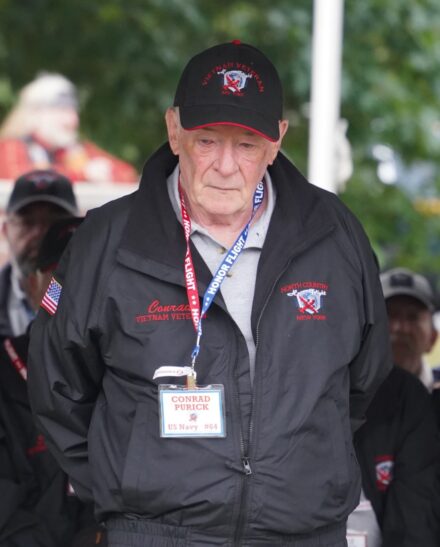 Conrad Purick, US Navy 1966-1970 Vietnam
Conrad Purick, US Navy 1966-1970 Vietnam
Conrad enlisted in the Navy because they had the best school. After basic training, he served a year on the USS Dixie. He volunteered for the Underwater Demolition Team and became a “frogman,” completing a wet, cold, sleepless hell week — one of just 53 graduates out of 150.
Only the smallest and toughest were chosen, so Conrad served on a tiny boat called Project Dart, surveying rivers and taking photos with an $8,000 camera. It was very dangerous.
After two tours, Conrad returned to Plattsburgh and became a pipe fitter. He recently visited a Navy buddy in Colorado, keeping strong the bonds of service.
Once, while wearing a SEAL Team shirt, someone told him, “If you’re going to wear that, you better have earned it — not just be an imposter.” And Conrad had.
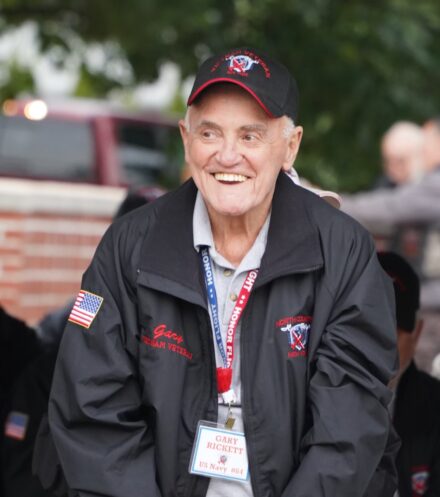 Gary Rickett, US Navy 1966-1968 Vietnam
Gary Rickett, US Navy 1966-1968 Vietnam
Gary enlisted while still in high school. The day after graduation, he headed to Brooklyn, and from there to his home port in Newport, Rhode Island. Serving as a signalman, he specialized in ship-to-ship communication using Morse code and flashing light signals.
Though never in a war zone, Gary spent two years aboard the USS Richard Kraus, traveling throughout Europe, the North Atlantic, and the Caribbean.
But a brush with trouble at age 13 came back to haunt him. To access top-secret communications, Gary needed special clearance, including five character references. The FBI had to investigate his teenage record before finally approving his clearance.
Gary loved the Navy and had planned to reenlist. But back home, a chance run-in with his friend Bob Williams made him reconsider. Ninety days flew by—and with them, his Navy chapter quietly came to a close.
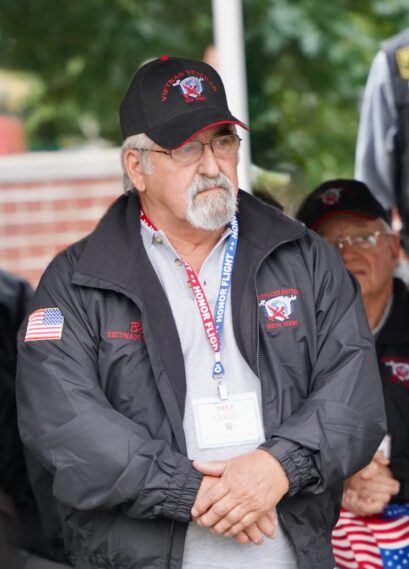 William Terry, US Marine Corps 1970-1972 Vietnam
William Terry, US Marine Corps 1970-1972 Vietnam
Bill was drafted into the Army, but during basic training, his drill sergeant called formation and ordered every fifth man to step forward. Bill did—and just like that, he became a Marine. He completed basic training at Parris Island, then went on to Fort Geiger for machine gun training.
Shortly afterward, Bill was deployed to Cuba to help protect the U.S. line, followed by a posting in Panama. His service later took him across Europe—Spain, Portugal, Greece, Italy, and Turkey—where he trained alongside European forces. He saw this as one of the great rewards of military life: experiencing different cultures and people firsthand.
Bill remembers one moment during training when a drill instructor asked where he was from. “New York,” he replied. “Where in New York?” the instructor asked. “Near the Canadian border,” Bill answered. “Well then,” the instructor said, “your name is Bill Canada.” And the nickname stuck with him throughout his time in the service.
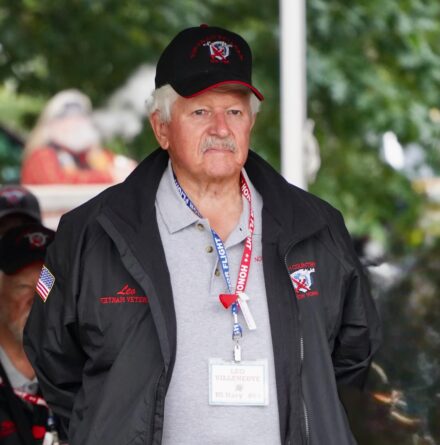 Leo Villeneuve, US Navy 1964-1968 Vietnam
Leo Villeneuve, US Navy 1964-1968 Vietnam
Leo grew up in Moose Creek, Ontario. While visiting his sister in Potsdam, he and a buddy decided to enlist in the U.S. Navy. As a Canadian, Leo needed a Green Card, which the Navy helped sponsor. After a few months working with the U.S. Consulate in Montreal, he was in.
Following basic training, Leo headed to Texas and then California to become a Construction Electrician. His first assignment took him to the Caribbean, and then to Vietnam, where he served two tours. Unlike many, Leo deployed with his entire construction battalion, the Seabees. He worked in Da Nang, Chu Lai, Quang Tri, and Dong Ha—eventually becoming head electrician. Though he didn’t see direct combat, he was always close enough to carry a weapon.
The skills he gained in the Navy led to a successful electrical business in New York State. But for Leo, one of the greatest takeaways was the lifelong friendships forged during his time as a Seabee.
Posted: September 7th, 2025 under Adirondack Region News, Community Events, General News, Honor Flights, National History, National News, Northern NY News, Peru News, Peru/Regional History, Veterans' News.
